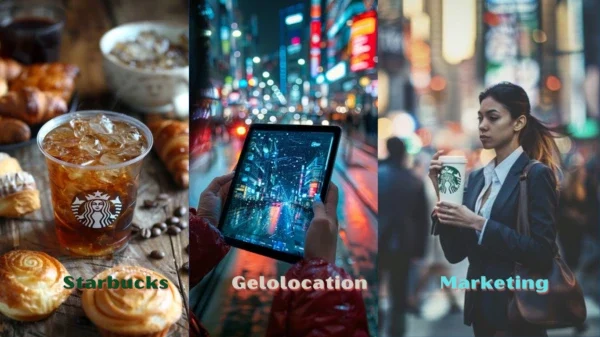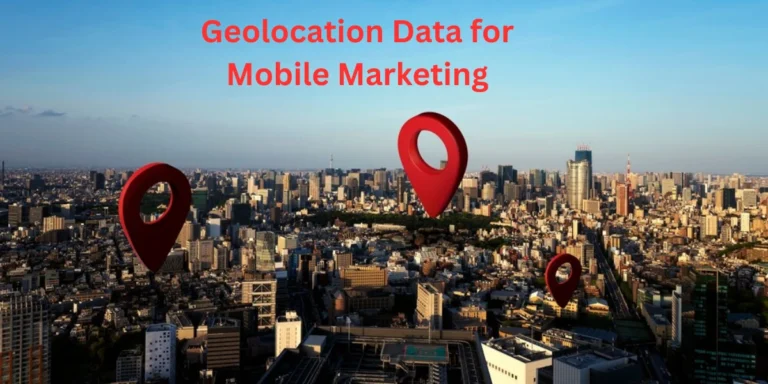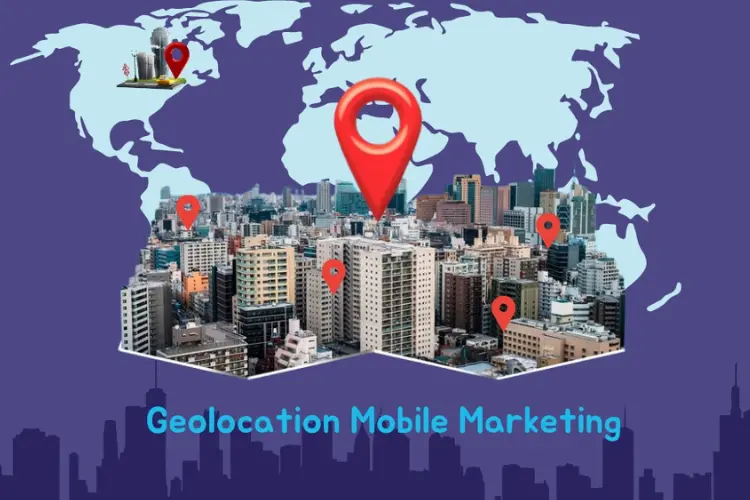Location-Based Mobile Marketing: Unlocking the Ultimate Power of Precise Location-Based Targeting

In the era of smartphones and mobile connectivity, location-based mobile marketing has emerged as one of the most effective ways to reach customers with highly targeted and personalized messaging. By leveraging the location data of mobile users, businesses can deliver relevant content, offers, and promotions directly to users based on where they are or where they have been. This form of marketing allows companies to connect with their audience in real-time, increasing engagement and driving conversions.
This article will explore Location-Based Mobile Marketing , its benefits, how it works, and strategies for leveraging it effectively in your marketing campaigns.
Table of Contents
1. What is Location-Based Mobile Marketing Mobile Marketing?
Location-based mobile marketing or Geolocation refers to the use of a mobile user’s physical location to deliver personalized marketing messages, such as ads, promotions, or notifications. Geolocation data is gathered from a user’s smartphone through GPS, Wi-Fi, Bluetooth, or other location-based technologies, enabling businesses to send hyper-targeted content that is relevant to the user’s current location or past behavior.
This type of marketing is particularly effective for driving foot traffic to physical stores, promoting location-specific deals, and enhancing the overall customer experience. Geolocation-based marketing can be used in a variety of contexts, from encouraging in-store visits to sending promotions when users are near a competitor’s location.
2. How Does Location-Based Mobile Marketing Work?
Location-based mobile marketing relies on the ability to track a user’s location in real-time using several technologies:
- GPS (Global Positioning System): GPS is the most common technology used for tracking user location. It uses satellite data to determine a mobile device’s precise geographic location. GPS data is particularly useful for delivering highly accurate location-based marketing messages.
- Wi-Fi and Bluetooth: Wi-Fi and Bluetooth can also be used to determine a user’s location, especially when GPS is unavailable (e.g., indoors). Wi-Fi positioning identifies the location of a device based on nearby Wi-Fi networks, while Bluetooth beacons can be used to trigger notifications when users are in proximity to a specific beacon.
- Cell Tower Triangulation: This method uses signals from nearby cell towers to estimate a user’s location. It is less accurate than GPS but can still provide useful location data, especially in areas with limited satellite access.
- Geofencing: Geofencing is a location-based marketing technique that creates a virtual boundary around a specific geographic area. When a mobile user enters or exits this area, they can receive targeted notifications or ads. This is particularly useful for sending location-specific promotions or driving foot traffic to stores.
- Location-Based App Permissions: Many mobile apps ask users for permission to track their location, either all the time or only when the app is in use. Marketers can use this location data to send highly relevant messages, offers, or content based on the user’s movements.
3. Benefits of Location-Based Mobile Marketing
Location-based mobile marketing offers several key benefits for businesses looking to enhance their marketing efforts:
- Personalized and Relevant Content
Location-based marketing allows businesses to send highly personalized messages to users based on their current location or where they have been. For example, a retail store can send a special promotion to users when they are nearby, increasing the chances of a visit. This level of personalization makes the messaging more relevant and engaging.
- Increased Foot Traffic
Geolocation marketing is particularly effective for driving foot traffic to brick-and-mortar stores. Businesses can use geofencing to send promotions or discounts to customers when they are near the store, encouraging them to stop by. This tactic is often used by restaurants, retail stores, and entertainment venues to boost in-store visits.
- Real-Time Engagement
One of the greatest advantages of geolocation marketing is its ability to engage users in real-time. By sending time-sensitive offers or location-based notifications, businesses can reach users at the exact moment they are most likely to act, resulting in higher engagement and conversion rates.
- Higher ROI
Because geolocation marketing targets users based on their location and behavior, it tends to generate a higher return on investment (ROI) compared to more generalized marketing campaigns. Users are more likely to engage with offers that are relevant to their immediate context, leading to increased sales and customer satisfaction.
- Competitive Advantage
Businesses can also use geolocation marketing to gain a competitive edge by targeting customers who are near a competitor’s location. For example, a coffee shop can send a discount offer to users who are near a competitor’s coffee shop, encouraging them to choose their brand instead.
4. Location-Based Mobile Marketing Strategies
To effectively leverage geolocation mobile marketing, businesses must adopt strategies that make the most of location data and deliver timely, relevant messages. Here are some key strategies to consider:
- Geofencing for Proximity Marketing
Geofencing is one of the most effective ways to deliver location-based content. By setting up virtual boundaries around specific locations, businesses can trigger automatic notifications when users enter or leave the area. This is particularly useful for driving foot traffic to retail stores, restaurants, or events.
For example, a retail store could set up a geofence around a shopping mall and send a push notification offering a 10% discount when users enter the mall. This real-time engagement encourages users to visit the store and take advantage of the offer.
- Hyperlocal Targeting
Hyperlocal targeting involves delivering marketing messages to users based on very precise geographic areas, such as neighborhoods, streets, or specific landmarks. This can be especially effective for local businesses that want to reach customers within a certain radius of their store or service area.
For example, a local gym could send a promotion to users who live within a 1-mile radius, offering a free trial membership. This approach ensures that the message is relevant to users who are nearby and more likely to visit the gym.
- Beacon Technology for Indoor Location-Based Marketing
Bluetooth beacons are small, wireless devices that transmit signals to nearby smartphones. They are particularly useful for indoor location-based marketing, such as in shopping malls, airports, or large retail stores. When a user enters the range of a beacon, they can receive a notification with personalized content or offers.
For example, a clothing store could use beacons to send a notification about a flash sale to customers who are browsing a specific section of the store. This targeted approach enhances the in-store experience and encourages immediate action.
- Location-Based Ad Targeting
Many digital advertising platforms, such as Google Ads and Facebook Ads, offer location-based targeting options. This allows businesses to display ads to users who are in a specific geographic area, making the ads more relevant and increasing the likelihood of clicks and conversions.
For example, a restaurant could use location-based ad targeting to show ads to users within a 5-mile radius of the restaurant during lunch hours, promoting a special lunch deal.
- Real-Time Event-Based Marketing
Geolocation marketing can also be used to engage users in real-time during events, such as concerts, conferences, or sporting events. By targeting users who are attending the event, businesses can send offers, updates, or promotions that enhance the event experience.
For example, a beverage company could send a push notification offering a discount on drinks to users who are attending a music festival. This type of real-time engagement boosts brand awareness and encourages users to take immediate action.
5. Best Practices for Location-Based Mobile Marketing
To get the most out of geolocation mobile marketing, businesses should follow these best practices:
- Respect User Privacy: Always ensure that users have opted in to location tracking and are aware of how their location data will be used. Transparency is key to building trust with your audience.
- Deliver Value: Ensure that the messages you send are valuable and relevant to the user’s current location or behavior. Avoid sending generic offers that may not be of interest to the recipient.
- Use Timely Notifications: Send notifications at the right time to increase engagement. For example, send promotions during business hours or when users are near your store.
- Test and Optimize: Continuously monitor the performance of your geolocation campaigns and adjust your strategies based on what works best. A/B testing different messages, offers, and timing can help you refine your approach.
6. Conclusion
Location-based mobile marketing is a powerful tool for businesses looking to engage with their audience in a more personalized, relevant, and timely way. By leveraging location data, businesses can deliver hyper-targeted messages that resonate with users based on where they are and what they’re doing in real time. Whether through geofencing, beacon technology, or hyperlocal targeting, geolocation marketing offers endless possibilities for driving foot traffic, increasing engagement, and boosting sales.
As mobile usage continues to rise, businesses that embrace geolocation mobile marketing will be well-positioned to stay ahead of the competition and connect with customers in meaningful ways.




One Comment
Comments are closed.